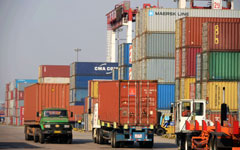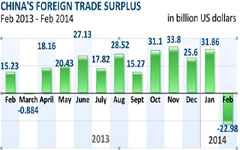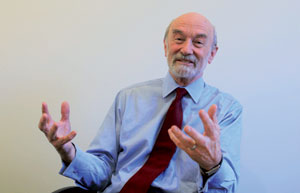Weak trade figures 'signal slowing economy'
By Lyu Chang (China Daily) Updated: 2014-04-11 07:07First-quarter total trade with members of the Association of Southeast Asian Nations went up 2 percent, while trade with Japan rose 2.6 percent, despite ongoing political tension.
|
 |
|
 |
"Some special factors distorted export and import figures, such as fake export reporting early last year," he said. "China's trade with Hong Kong can be explained by the 'hot money' outflows due to an undervalued renminbi from the fourth quarter of 2013 through this year."
Submitting fraudulent export receipts to government authorities is a way for "hot money" for investment to evade much of the usual scrutiny that capital inflows face in China. This practice usually involves capital flows from Hong Kong.
Wang said that the import figures are a reflection that the real estate and vehicle industries have started to stagnate.
Other analysts said that exports remain stronger than the official figures suggest, and most of them forecast that China will meet its full-year target of 7.5 percent trade growth.
"We continue to expect investment and construction activity to accelerate following project announcements by the central government and local governments since the middle of March. We maintain our full-year GDP growth forecast of 7.2 percent and look for a recovery in growth momentum," a report by Barclays Research said.
|
 |
 |
- Langfang to host annual economic fair
- No stimulus for a resilient economy
- China to boost crop insurance
- Tencent given bank go-ahead
- Shanghai Tobacco Group selling its stake in Watsons
- WTO raises 2014 global trade growth forecast to 4.7 pct
- Top legislature mulls changes to environmental protection law
- Shanghai upgrades The Bund for tourism

















